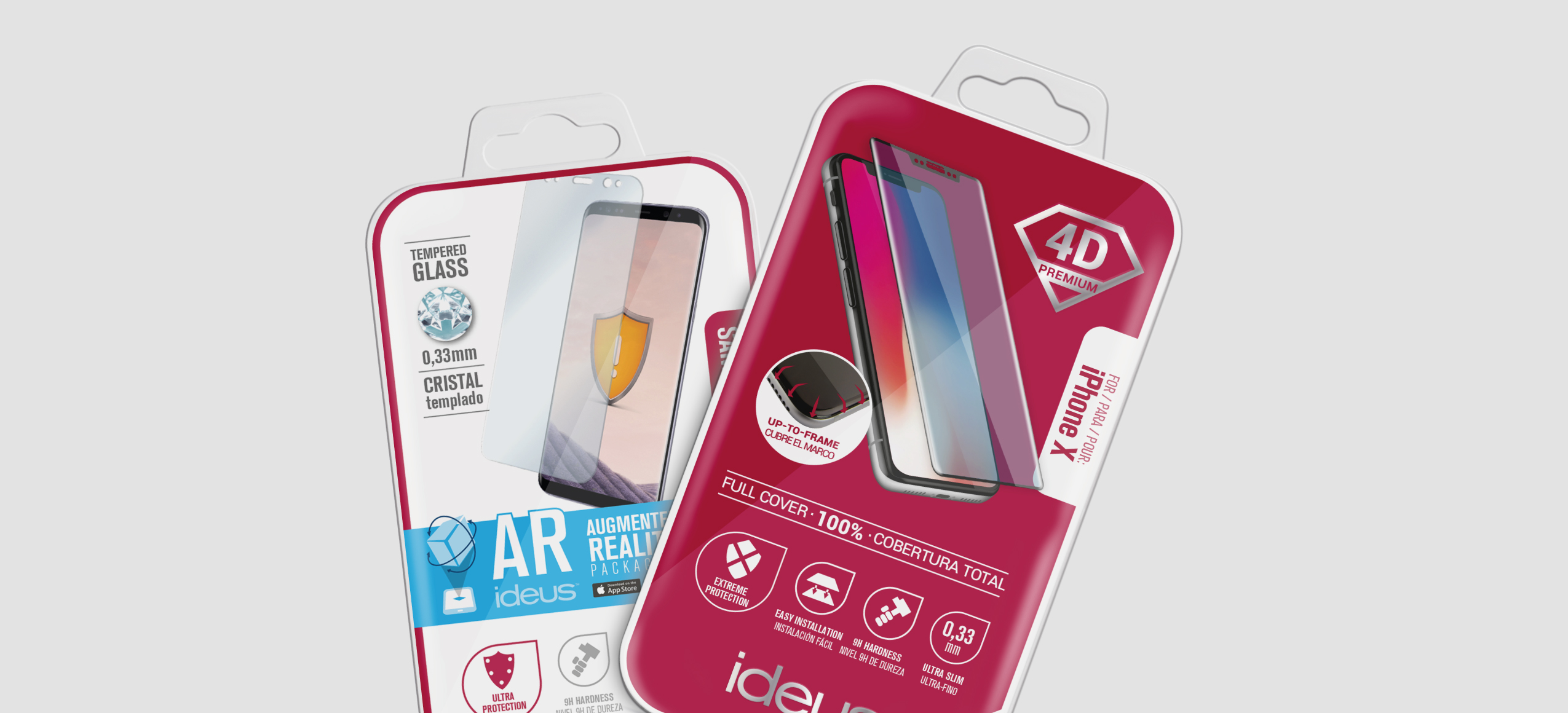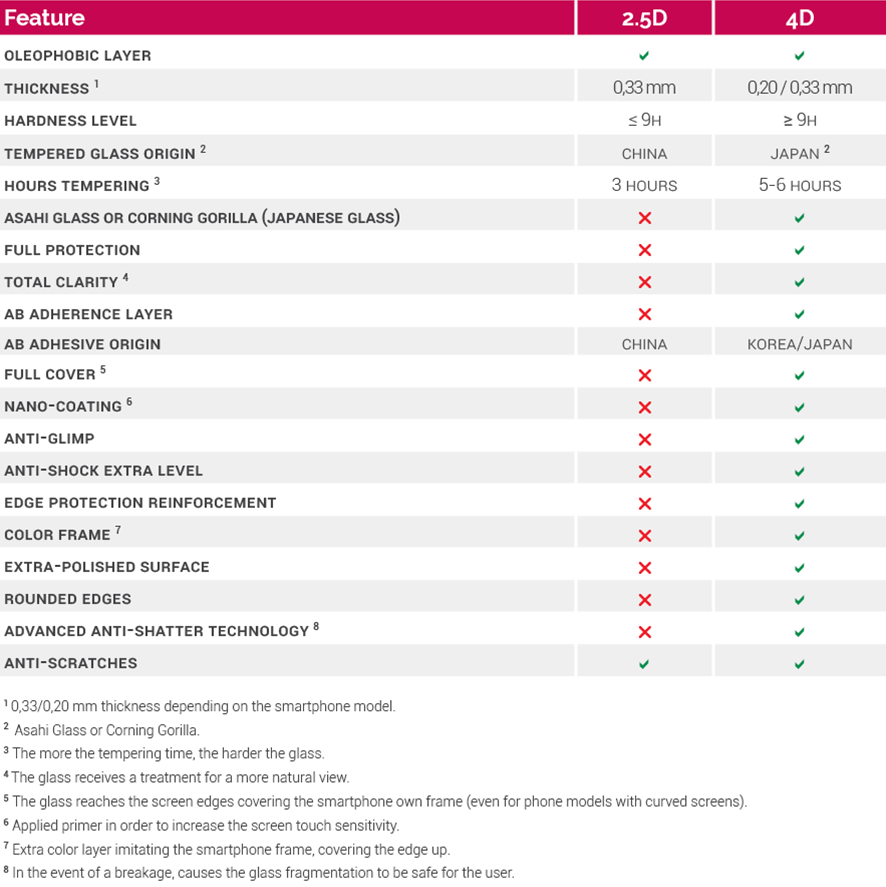Tempered glass protectors comparison
The advent of new smartphones with infinite screens has made the use of screen protectors inevitable. Today we are going to clarify what is the difference between a 4D tempered glass protector and other cheaper models and why you should have one already on your mobile phone.
The tempered glass protectors are made of glass and as such, during the construction process they can be given the hardness you want. This is where the Mohs scale appears to make a difference. This scale establishes levels of scratch resistance based on different materials. As you can see in our article on “The 10 levels of hardness” the scale is organized from 1 to 10.
The hardness level is a determining factor in differentiating between two tempered glass protectors. The glass used in Ideus screen protectors for mobile pones has the hardness of the corundum, level 9 hardness: only below the protection that we would obtain from the diamond. So get used to the idea of its great resistance, not only to scratches, but also to impacts.
The Pros and Cons of tempered glass:
- Pros: the positive part is that its hardness and level of protection is higher, both scratches and possible blows, than that of the standard protector. Another highlight is that the fingers slide more smoothly through a glass protector than a plastic protector.
- Cons: the thickness is higher and you will notice that the mobile phone has a protector. But if you want the OLED screen of your new iPhone to be harmless, you have to give in on certain aspects. As in the price, which is effectively higher: the better the protector, the more expensive it is to produce.
These pros and cons make the difference between glass and plastic screen protectors and, although they are more expensive, glass protectors offer superior protection and are easier to keep. But are there any differences between tempered glass protectors?
Differences between a 4D tempered glass protector versus a 2.5D protector
4D protectors have come onto the market to cover the new frameless, infinite screens that every high-end smartphone incorporates. This premium protector is designed for a type of “full screen” device that needs the best protection. As you suppose fixing this type of screen is quite expensive, it is worth investing a little more in the purchase of a 4D protector that will eventually be more than amortized.
As you can see in the table above, the differences between the 4D protector and the 2.5D protector are abysmal. We will now analyse the main characteristics of the 4D protector.
The new model of tempered glass protector, the premium 4D protector, maintains the 9H hardness level and adds up to 6 hours of tempering. To give you an idea, the more hours of tempering, the harder the glass and the different way to break it, since it is broken in a safe way for the user.
In addition, this protector is manufactured using high quality Japanese Asahi Glass or Corning Gorilla with high strength Korean glue for optimum adhesion to the mobile phone. A treated glass that achieves a more natural vision, thanks to an oleophobic layer of calculated thickness so as not to reduce the transparency of the glass. This layer prevents fingerprints from getting marked and achieves the perfect balance between protection and sharpness.
The glass reaches the edge of the screen by covering the frame (even on models with curved screens) so that it offers extra protection against knocks. It also includes a color frame that simulates the appearance of the phone’s frame, looking for a greater resemblance to the terminal’s own design.

The nano-coating primer layer increases the sensitivity of the screen. Now that the physical buttons are on their way to extinction, this layer makes it easier for sensors to detect fingerprints. You’ll have a great experience when it comes to touching the screen on your smartphone. The mobile phone will be able to recognize the different types of pulsations depending on the strength with which you press the screen. Without losing sensitivity.
This is not to say that 2.5D protectors do not fulfil their purpose. They continue to protect the vast majority of mobile phones on the market from scratches and minor knocks. But for the most demanding screens you are looking for a protector that combines all the features described above.
Conclusion:
If you plan to carry a high-end mobile phone in your pocket or purse between keys, coins and other things, it is in serious danger. Carrying a smartphone over €800 without a protector is crazy. The smartest option is to choose the best protection the smartphone can have. Ideus’ range of 4D tempered glass protectors covers the entire screen. They are made with Japanese glass, 5 layers of security and the most advanced technology worldwide. If your device, on the other hand, is a mid-range phone, like that of most users, the 2.5D screen protector protects your mobile phone from knocks, scratches and fingerprints. And it’s only 0.33 mm thick. Take a look at the full range of Ideus protectors and choose the one you want.
Are you a protector fan?







